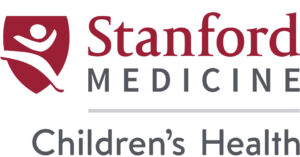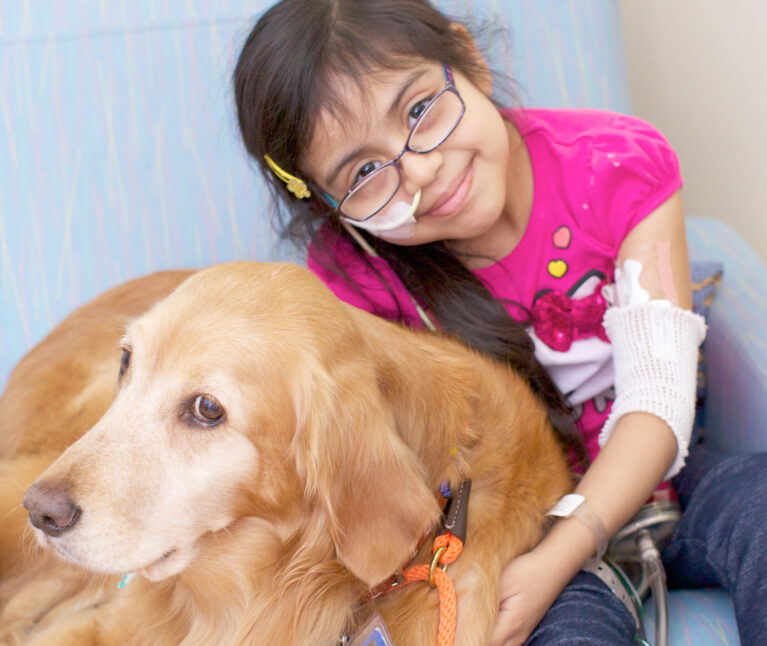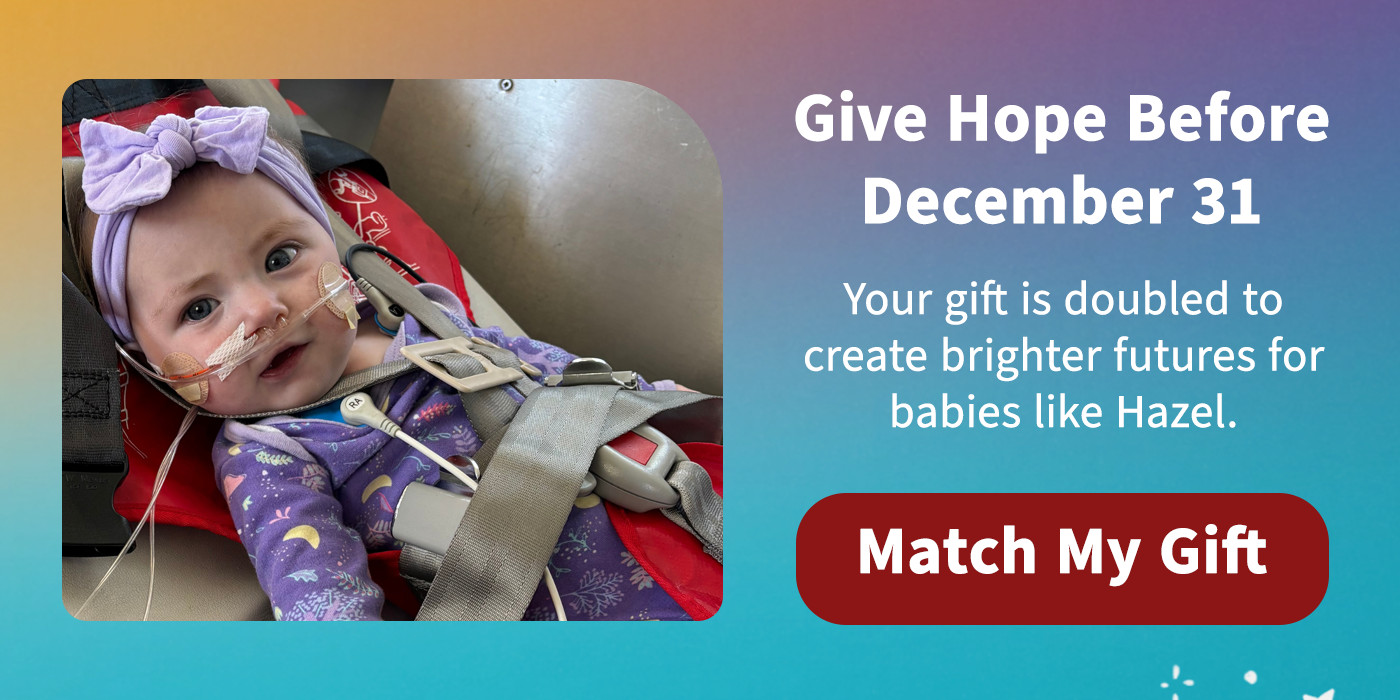When 2-year-old Lexsea Morgan of Ben Lomond was scheduled for surgery at Lucile Packard Children’s Hospital last February to fix a congenital kidney problem, her mother had an unusual request: Would it be okay if she remained at her daughter’s bedside while the little girl was anesthetized? “I remember when I handed off my oldest daughter for surgery years ago I was just a nervous wreck,” Jennifer Morgan recalls, “so this time I asked if there was any possibility of my being able to come into the operating room with Lexsea and stay with her until she was out.”
Lexsea Morgan
Having mom or dad present during anesthesia induction isn’t always appropriate, particularly if the parent is squeamish or the procedure is complicated. In Lexsea’s case, though, doctors were receptive. After making sure Jennifer was properly suited, they allowed her to sit on the toddler’s gurney and even to hold the anesthesia mask gently over her daughter’s face. “I waited until she was not fully sedated but pretty out of it—to the point she wouldn’t notice that I wasn’t there—and then they took over and did their thing and it was a very successful operation,” Morgan says. “Having a chance to visualize what was going on gave me a lot of peace of mind.”
While parent-present induction remains rare in the operating rooms, in other parts of the Hospital it’s almost routine, says anesthesiologist Rebecca Claure, MD. Parents are often present for procedures ranging from MRIs and radiation treatments to colonoscopies and catheterizations. “A lot of the time we need to use ‘giggle juice’ [short-acting valium] to calm down the smaller kids, but if you have a parent there you often don’t need any,” Claure notes. “I’ve had parents say they don’t want to see their child that way, and we don’t want them to feel guilty about that choice. But for those parents who are interested, we talk through what they can expect to see, and we reassure them.”
Mobile Medicine
Family-friendly induction isn’t the only thing that people appreciate about the anesthesiology service at Packard Children’s. Unlike adult anesthesiologists, who spend most of their time in the operating room, Packard anesthesiologists are constantly on call, working their bedside magic on kids in widespread units throughout the Hospital. More than half of the 12,000 anesthetic procedures they do each year—from regional blocks and light sedation to general anesthesia—are performed outside the OR, in places like imaging suites, the Cardiac Intensive Care Unit, the Neonatal Intensive Care Unit, and the Bass Center for Childhood Cancer and Blood Diseases.
Why the traveling roadshow? For one thing, children feel pain more acutely than grownups. They’re also a lot squirmier—particularly when facing strangers armed with needles. As service chief Anita Honkanen, MD, explains, “Adults can typically endure a lumbar puncture without anesthesia, but it’s frightening and they have to hold still. With the aid of an anesthetic, we can get kids to sleep in their parent’s arms in the procedure room, and often they don’t even know that the parent ever left.”
A U.S. Army veteran and mother of five, Honkanen came to Packard Children’s nine years ago, when there were 15 anesthesiologists on the payroll. Today she oversees 30 staff physicians plus residents and half a dozen hand-picked fellows. Many of them work in teams focusing on complex sub-specialties, such as transplant anesthesia, cardiac anesthesia, neuroanesthesia, and pain management.
Canine Therapy
As the anesthesiology staff has evolved over the years, so has the technology. R.J. Ramamurthi, MD, clinical director of operating room management, is especially grateful for four new SonoSite ultrasound machines that assist with placing intravenous lines and nerve blocks. “Before we got them,” he says, “people were using anatomical landmarks and it was a hit-or-miss thing. With ultrasound you actually see the nerves and other structures, so there’s no guesswork involved. Essentially it improves patient safety, with less poking.”
Another useful new tool is SimBaby, a high-tech mannequin that can mimic breathing, crying, vital signs, and signals of distress. Following scripted scenarios, Packard anesthesiologists wheel the lifelike doll and its attached laptop computer all over the Hospital, acting out emergency situations and complex surgeries with their colleagues. “Anesthesia is like flying an airplane,” Ramamurthi explains. “You have a takeoff (induction), maintenance, and landing (waking up at the end). So we simulate events just as a pilot would, to get the feel for situations before we’re faced with them in real life. That’s a big thing that we are proud of, because we are the first children’s hospital on the West Coast to do it.”
Furry Friend
On a warm spring afternoon, a mellow golden retriever named Carly is walking her daily rounds on the first floor at Packard Children’s. The certified therapy dog and her owner, clinical nurse specialist Sandy Sentivany-Collins, RN, are relaxed and playful, but their mission is serious: To get children’s minds off their pain and their bodies moving again. “We get a lot of requests for Carly to come visit; she has a very positive influence on the children’s mood,” says anesthesiologist Elliot Krane, MD, director of Packard’s Pain Management Service.
Canine Therapy
Canine therapy is one of several approaches that Krane and his team use to help children deal with post-operative pain, or the pain of injury and disease. Many youngsters benefit from medications like anti-inflammatories, opioids, and nerve blocks. Others find it helpful to talk with a clinical psychologist. Still others find relief in hypnosis, biofeedback, acupuncture, or physical therapy. Sometimes family counseling is necessary as well, to teach parents how to help their children without coddling them.
Most cases require a combination of tactics. “We need a multidisciplinary approach because pain is multidisciplinary,” Krane says. “It affects not just one part of the body but the entire well being of a child, including their mood. And then the mood, in turn, affects how much pain they feel.”
Over the course of a typical day, Krane and his team of physicians, psychologists, and nurses will evaluate and treat around 25 patients—a five-fold increase from when he arrived at Packard in 1994. He particularly remembers 14-year-old Bailey Deacon, of Los Gatos, who spent six weeks in the Hospital last year suffering from intense burning pain in her feet. The cause was erythromelalgia, a rare, possibly genetic nerve disorder exacerbated by heat and stress. By the time her father carried her into Krane’s office, the girl had lost 35 pounds and was a sleepless wreck.
Bailey Deacon
“When Dr. Krane saw what kind of distress she was in, he put in an epidural so she could finally rest. That was huge,” her grateful father, Troy, recalls. Krane also treated Bailey’s feet with a solution of capsaicin—the same substance that makes peppers hot—to desensitize her nerve endings. Anti-seizure pills also helped to slow her pain response, as did some time with a clinical psychologist, advancing her recovery still further.
Today Bailey is back at school, enjoying freshman science and algebra classes at Presentation High School in San Jose. “Every now and then you hit a home run,” Krane acknowledges, smiling. “But we’re still learning, still in the infancy of pain management, compared to what I hope it will be like in 20 years. We’re still using variations on 2,000-year-old drugs. Even NSAIDS [non-steroidal anti-inflammatory drugs] are basically aspirin, and that’s been around since the time of Hippocrates.”
Small Bodies, Small Doses
Perhaps the biggest challenge in pediatric anesthesia is figuring out how much medication small bodies need. Most painkillers, sedatives, and anesthetics were designed and approved for adults, and scaling down their dosages for an infant or child can be tricky, says Gregory Hammer, MD, director of pediatric anesthesia research. That’s why it’s essential to understand the pharmodynamics and pharmokinetics of various drugs: how they affect the body, and how the body distributes, metabolizes, and eliminates them.
Canine Therapy
One of Hammer’s latest clinical studies is looking at morphine and methadone, to understand how these well-known opioids are metabolized in four age groups: babies, toddlers, school age children, and teens. Hammer and his team at Packard Children’s are also investigating etomidate, used for the induction of anesthesia in children with heart failure. “We like to use etomidate on children with heart failure because it doesn’t tend to lower blood pressure,” Hammer says. “We’re also looking at promising newer drugs, such as dexmedetomidine, a novel sedative that doesn’t cause respiratory depression.” It’s also less likely to cause delirium, an upsetting side effect that can hamper a child’s recovery.
Still another research project—one that should be of special interest to parents—involves the long-term effects of anesthesia on the developing brain. Studies in animals suggest that exposure to anesthesia at a very young age might be associated with lower performance on tests of memory, attention, and learning. So cardiac anesthesiologist Lisa Faberowski, MD, is reviewing longitudinal studies to see if there might be similar effects in children.
In the meantime, service chief Honkanen tells families, “One of the critical things to remember is that you don’t do a surgical procedure on a child unless you really need to. You have to weigh the risks—a very small chance of a subtle change later on—versus a very real problem at the present moment.”
Back in Ben Lomond, little Lexsea Morgan is feeling much better now. Free of her chronic urinary tract infections, the brown-eyed toddler is running all over the house, stopping just long enough to catch up on her favorite television show, Dora the Explorer.
Looking back, her mother is profoundly grateful for the peace that surrounded them both on the day of surgery. “I was surprised because I kept telling everybody that I was going to completely lose it. But by knowing where Lexsea was, and the people who were with her, and the room that she was in, I barely cried,” Jennifer Morgan marvels. “If this were a normal hospital, that opportunity would have been unlikely, but because it’s Packard, they really were geared to making us comfortable.”
And her Packard Children’s anesthesiologists couldn’t be more pleased to hear it. As R.J. Ramamurthi likes to say, “Creating a feeling of calm for the family is not just a science, it’s an art.”


